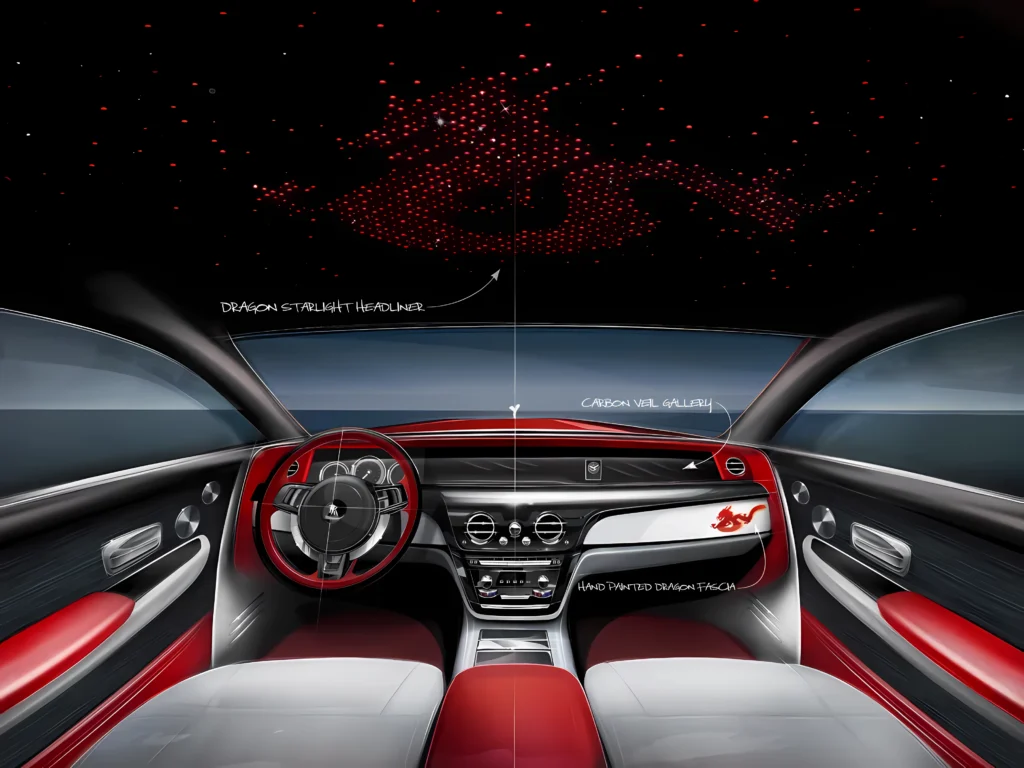The vintage era in the automotive world was a time of transition. The car started off in 1919 as still something of a rarity, and ended up, in 1930, well on the way towards ubiquity. In fact, automobile production at the end of this period was not matched again until the 1950s. In the intervening years, most industrialized countries built nationwide road systems with the result that, towards the end of the period, the ability to negotiate unpaved roads was no longer a prime consideration of automotive design. In today’s terms, a vintage car is defined the same as a classic.
So, here are some classic vintage automobiles that debuted once in the history of the automobile industry.
The ability to negotiate unpaved roads was no longer a prime consideration of automotive design
 The EFIJY
The EFIJY
The ‘EFIJY’ was built by Holden in 2005 as a tribute to the iconic FJ and successfully mated the past, present and the future in to one timelessly impressive looking package. Although not technically built in the same vein as many concept cars, which often indicate technology and design of the future, the EFIJY was met with a similar reception. Designed and built after hours as somewhat of a passion project, the car was built on a modified Corvette chassis and featured a thumping 6.0 litre V8 producing 480kw/ 775nm. The car was so well received it was even the recipient of the 2007 Concept Car of the Year award in Northern America, proving that the EFIJY’s timeless good looks appealed to a global audience. Despite high demand from millionaires such as sheiks and sporting stars, Holden made the decision to cap production at one, with the EFIJY currently residing at Holden’s headquarters in Port Melbourne.
 1939 Duesenberg Coupe
1939 Duesenberg Coupe
Duesenberg ceased production in 1937 after Cord’s financial empire collapsed. However, between 1937 and 1940, one automobile put the final touch to this historical marque. It took three years to complete both the tailor-made interior and futuristic body. By command of the owner, it was to be painted in a two-tone grey paint scheme so it would look like a ghost in the night. Finished in 1939, this legendary masterpiece was christened as “Duesenberg Coupé Simone Midnight Ghost.” It was both the longest Duesenberg and the last one delivered; and finally the last one ever made, Inspired by the modernist lines of the Art Deco movement, it captures all the romance of a bygone era. The graceful sweep of the fenders, the luxuriously appointed interior complete with a crystal-clear steering wheel makes the car unique.
 1948 Buick Streamliner
1948 Buick Streamliner
Mechanical engineer Norman E. Timbs created this dramatic streamliner in the 1940s which in many ways was the ultimate American hot rod. He designed and fabricated much of the project himself which included a custom aluminium body and steel chassis. It took him over two years to finish and the resulting chic roadster was good enough for cover of Motor Trend as well as features in Mechanix Illustrated, Popular Mechanics and Motor Life.
The car was discovered in the desert pretty much intact in 2002. It was bought at auction and restored by Dave Crouse at Custom Auto, Inc. in Loveland, Colorado for owners Gary & Diane Cerveny of Malibu, California. After its “complete and exacting” restoration, it debuted at the 2010 Amelia Island Concours d’Elegance in a class reserved for Motor Trend Cover Cars.
 Alfa Romeo BAT
Alfa Romeo BAT
In 1955 Bertone turned in the final design for the B.A.T. project, a series of prototypes which represented the peak of styling creativity at the time. The B.A.T. 9 did away with the marked wing lines of the previous models in favour of a cleaner, more sober line. The tail fins, which in the other two models, 5 and 7, had a real wing-like look, were sized down into two small metal plates. Bertone transformed the highly creative styling of the two previous B.A.T. models into design credibility, abandoning the extremes of the other designs. The more rational, less artistic design of this prototype, however, does nothing to diminish Bertone’s creative contribution to the Italian school of bodywork design.
The final B.A.T. Concept, the B.A.T. 9 was completed in 1955. It continued the experimentation with aerodynamics but not as exaggerated as the prior models. The body styling took into account future production requirements and is arguably themostattractiveoftheB.A.T.automobiles.
After more than 50 years, there is a new BAT model. The new BAT 11, based on the Alfa Romeo 8C Competizione, shares many styling cues with the classic BAT cars of the 50s. Based on a modified Alfa Romeo 8C platform, the BAT 11 continues some of the distinguishing elements of the original ‘Berlinetta Aerodynamica Tecnica’ cars designed by Franco Scaglione and developed by Nuccio Bertone.
Each B.A.T. car has its vivid story. Yet, the histories surrounding B.A.T. 9 and B.A.T.
11 are fundamentally intertwined. Dr Kaberle purchased B.A.T. 9 as a teenager with popcorn-stand money and a loan from his grandmother. He sold it 23 years later to help fund medical treatment for his wife, Debbie, who passed away two years later. Soon after, Kaberle started exhaustive research of the B.A.T. cars. He visited the Scaglione family in Italy and began working with Stile Bertone on B.A.T. 11, a project he calls ‘Dreams and Design for a Cure’ that honours his wife and the B.A.T. heritage.
 1951 General Motors LeSabre XP-8
1951 General Motors LeSabre XP-8
The car that defined auto design in the 1950s in America was the General Motors LeSabre of 1951. Conceived by the flamboyant GM design chief Harley Earl, it was meant to set out the programme for the cars of the new rocket age.
Earl had conceived of the idea several years before, while still driving his iconic 1938 Buick Y Job. In a 1946 meeting with Harold Curtice, chief of Buick at the time, there was mention of retiring the Y Job and creating a new ‘halo car’ for the brand. Earl, never one to miss an opportunity, convinced Curtice to build two cars: the XP-8 which would emphasise styling, and the XP-9, which would focus on engineering and be completed under the leadership of Buick’s senior engineer Charles Chayne. The two cars were developed in tandem over the next few years at the then-astronomical cost of a million dollars (roughly 20 million in today’s dollars).
The XP-9 would become the Buick XP- 300, a sporty roadster that resembled a sleek extension of the early 1950s styling themes but with an emphasis on Buick’s future identity. The XP-8 would become the LeSabre, Earl’s personal car for a while, and a statement about where GM styling would be going in the new decade.
The LeSabre concept still tours on occasions, and is a reminder that a design can not only sum up an era, but predict it as well. It is a good lesson for contemporary designers to keep in mind as we enter a new era of highly automated and connected cars.


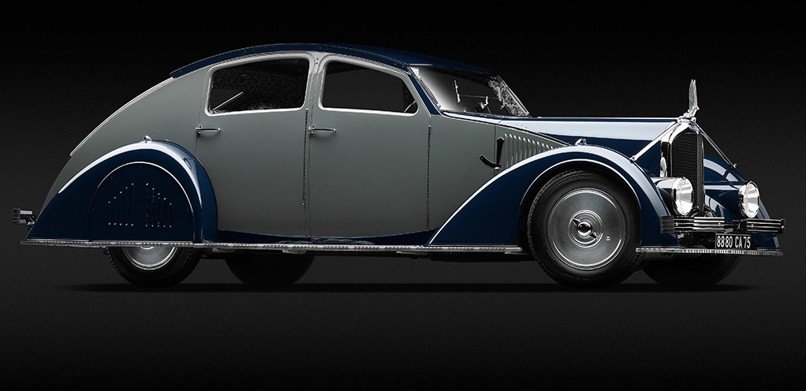
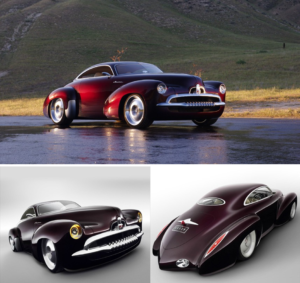 The EFIJY
The EFIJY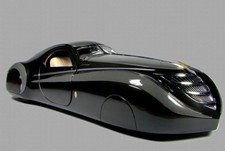 1939 Duesenberg Coupe
1939 Duesenberg Coupe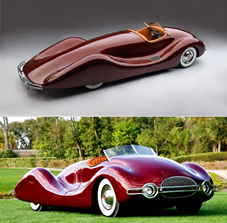 1948 Buick Streamliner
1948 Buick Streamliner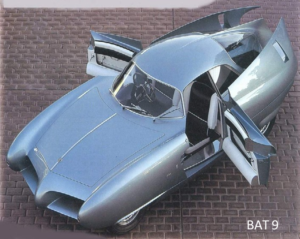 Alfa Romeo BAT
Alfa Romeo BAT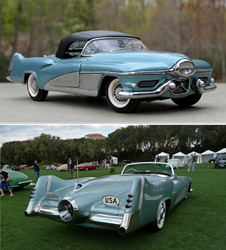 1951 General Motors LeSabre XP-8
1951 General Motors LeSabre XP-8




